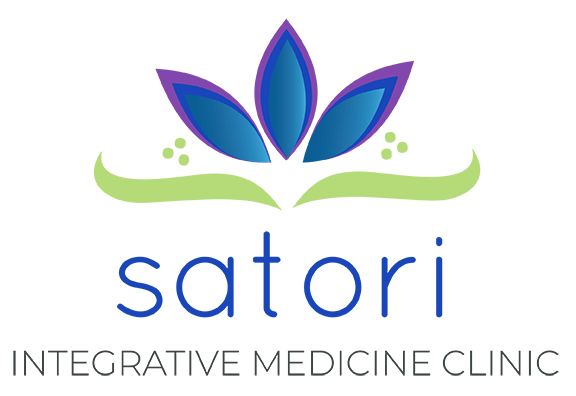The US Department of Veterans Affairs describes PTSD (Post-Traumatic Stress Disorder) as:
Post-Traumatic Stress Disorder is a mental health problem. PTSD can only develop after you go through or see a life-threatening event. It’s normal to have stress reactions to these types of events, and most people start to feel better after a few weeks. If symptoms last longer than a month and are causing problems in your life, it could be PTSD.
PTSD can also impact individuals who are not veterans. An estimated one in 11 people will be diagnosed with PTSD in their lifetime. In fact, anyone can develop it at any age. Intense or long-lasting traumatic events, often outside of a person’s control, can make it more likely that they will develop it. That said, it is more common in veterans than in the general population. Deployment in a war zone as a combatant or a medic, training accidents and military sexual trauma are all potential sources of trauma.
Understanding PTSD
Each person is unique, with unique symptoms, however; it typically shows up with symptoms that include:
- reliving the event (nightmares, flashbacks, triggers that bring it all back)
- avoiding places or activities that might be triggering (avoiding crowds, driving, movies, darkness, or being alone – in effect anything and everything that might offer a reminder)
- negative thoughts and feelings (numbness, forgetfulness, loss of interest, inability to feel love, distrustfulness, shame, guilt)
- feeling on edge, keyed up, or reactive (difficulty sleeping, difficulty concentrating, easily startled, lashing out)
We’ve included this overview, not as a diagnostic tool, but to convey that PTSD is a BIG DEAL to those who suffer from it. A very BIG DEAL. PTSD is often associated with high degrees of disability, making it difficult or impossible for an individual to maintain employment, healthy relationships, and social wellness. Furthermore, the National Library of Medicine reports: “Individuals with PTSD are 80% more likely than those without PTSD to meet the diagnostic criteria for at least one other mental disorder. In males, conduct disorder and substance use disorder are common. Other disorders that commonly co-occur include MDD (Major Depressive Disorder), alcohol use disorder, and anxiety disorders.”
Helping a Friend or Loved One with PTSD
If you have a friend or loved one suffering from PTSD, the VA suggests some things you can do to help:
- Learn as much as you can about PTSD. Knowing more about how it affects people will help you understand what your loved one is going through.
- Offer to go to doctor visits with them. Having a second set of ears and someone to take notes can be really helpful for those who have PTSD.
- Plan activities together, like having dinner or going to a movie.
- Take a walk, go for a bike ride, or do some other physical activity together. Exercise is important for health and helps clear one’s mind.
- Encourage contact with family and close friends. A support system will help your loved one get through difficult changes and stressful times. Sometimes people with it isolate to protect themselves or others.
- If you are comfortable and confident that you can hold the space, let them know that you want to listen and understand if it isn’t the right time to talk.
More information (including how to care for yourself if you are supporting someone with PTSD) can be found here.
How Ketamine Can Aid in PTSD Care
Medications including antidepressants, anxiolytics, sedatives, and even antipsychotics are prescribed to reduce the symptoms of PTSD. Many forms of psychotherapy have been used to help people manage PTSD. Talk therapy, extinction therapy, Cognitive Behavioral Therapy (CBT), Eye Movement Desensitization and Reprocessing (EMDR), and somatic therapy have all been used as healing tools to help individuals overcome PTSD. Recently, there has been a lot of exciting research on drugs that have been classified generally as psychedelics: MDMA, psilocybin, LSD, and ketamine. Currently, the only medication in this group that is available for legal use outside of a research study is ketamine. Ketamine infusions have proven effective and work more quickly than psychotherapy alone. In a study using IV Ketamine to treat chronic PTSD patients, PTSD symptom severity 24 hours post-infusion was significantly improved in the ketamine group compared to the control group. What’s more, the same study showed that:
- Patients who received ketamine were found to remain significantly improved after 2 weeks after a single treatment.
- Ketamine was associated with a significant decrease in comorbid depressive symptoms.
How does Ketamine Work for PTSD?
While the science is still evolving, ketamine seems to have multiple actions that can help decrease PTSD symptoms. Combining ketamine therapy with high-quality trauma therapy enhances and prolongs the effects of both the medication and the therapy. Ketamine seems to work by:
- Changing the way the two parts of the brain related to fear and memory react and interact (reducing activation of and connectivity between hippocampus and amygdala).
- Making the traumatic memory/response connection less fixed and more changeable.
- Increasing the number of neurons and the density of their connections to other cells.
- Creating a neuroplastic environment in the brain, allowing it to learn new responses and decreases the intensity of old pathways. Ketamine facilitates learning new ways of approaching life and unlearning dated or dysfunctional habits.
If you are a veteran or know someone who might benefit from ketamine therapy, please reach out to us at Satori Integrative Medicine Clinic. We can help with PTSD in non-vets, too.
References:
- Helping a Family Member Who Has PTSD https://www.ptsd.va.gov/family/how_family_member.asp
- Ketamine as treatment for post-traumatic stress disorder: a review – PMC (nih.gov) https://www.ncbi.nlm.nih.gov/pmc/articles/PMC6457782/
- Road Map to Trauma & PTSD https://www.thementalhealthcoalition.org/trauma-ptsd-roadmap/?gad_source=1&gclid=CjwKCAjwvvmzBhA2EiwAtHVrb16iMvi8K2BSez8asllugvSioqW0Hepe2_8aOrDGhE2vAye_WgaazBoCFzMQAvD_BwE
- How does Ketamine Really Work? https://glenwoodspringsketamine.com/2020/06/how-does-ketamine-really-work-neuroscience-in-pursuit-of-answers/
- What is EMDR Therapy? https://www.emdr.com/what-is-emdr/


Recent Comments